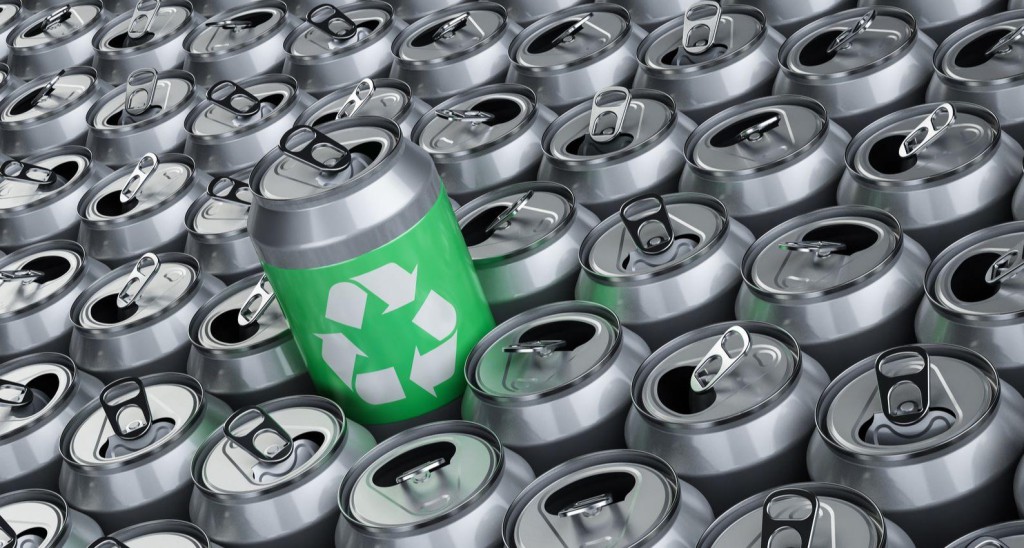Introduction
The world is increasingly realizing that recycling is a major opportunity for us to save the planet Earth from the detrimental effects of GHG (Green House Gases). The recycling process, in almost all contexts, takes lower energy and hence reduces the carbon footprint of the product and increases its lifecycle. Not only the energy and GHGs but also the waste handling is reduced, which reduces the lifetime emission of the product.
While we talk of recycling, aluminium is one of the most prominent metals as it is 100% recyclable, and the recycling process of aluminium takes only around 5-10% of the energy required to produce the primary aluminium (through the smelting process), which is itself an energy-intensive process.
Sometime during the second half of the 1950s, an aluminium can was used to pour a drink somewhere in the USA. Since then, aluminium cans have been used globally as a packaging material for various drinks. It is an interesting as well as capital intensive process to recycle the aluminium from the used cans or automotive or any other forms.
Aluminium can recycling
The recycling of aluminium from the cans involves a few steps. To gain a deeper understanding of aluminium cans recycling and its pivotal role in the process of decarbonization, please click here. Depending on the source of aluminium, the process varies a bit. Here are the steps involved.
1. Scrap collection and shredding
During this phase, used aluminium cans are collected and brought to the collection centre and from there, they come to the scrapyards in tons of volumes. After they get dumped, the cans are put in a giant shredder, where they get shredded into smaller pieces.
2. Sorting of shredded cans
After shredding, the cans pass through a conveyor belt. The speed of the same or sorting rate may vary based on the technology and the upcoming sorting process as defined by the line. It sometimes ranges within a wide limit of 5m/sec to 25m/sec and may be readjusted as well to increase the efficacy of the process. Sometimes, this may mean a thousand pieces per second[i].
3. Blast the lighter & separable materials away
The shredded materials also contain various other particles like glass or plastic pieces, as the aluminium cans do not come for shredding, only as the aluminium cans. They also come as a part of the larger collection volume and so may contain many such materials. So, to remove them, air jets blast away the lighter contamination like glass or plastic. Usually
4. Remove the ferrous impurities
Along with this, there are also magnets, which collect the ferrous contaminations or particles from the shredded metal pieces. Usually, the magnet is powerful so that the separation of the ferrous materials can take place even in the high-speed conveyor belt.
5. Remove the paint & other impurities under high temperature
The comparatively less contaminated aluminium scrap pieces are left with the paints or foils attached to the particles. They get vaporized when the scraps are heated at around 650-660 °C, leaving the pure aluminium chips behind.
6. Melting of clean aluminium chips
The cleaner aluminium chips are then melted at 730 °C. The aluminium chips melt at that point and create a molten aluminium bath.
7. Cleaning of dross
The molten aluminium usually has a layer of aluminium oxide formed due to the reaction of aluminium at 700 °C with the oxygen in the air. As a result, it needs to be removed with the help of a giant spatula. There are various methods by which aluminium dross may be collected, and some aluminium can also be collected from that, increasing the efficiency of the entire process. To know more about AL Circle’s Doss report, you may refer here.
8. Storing the molten metal in the holding furnace
After the aluminium metal is molten and the impurities are removed, the metal flows into a holding furnace where the metal is stored before leaving for the cast house. The temperature is maintained so that aluminium remains in its liquid form.
9. Formation of aluminium ingots and slabs
In the cast house, the molten aluminium is cast in the form of slabs or ingots of various sizes. After the same, the ingots are again put under a higher temperature of around 525-55 °C to release any air pockets or tensions in the ingot or slab.
10. Rolling
After the slabs are freed from any tensions, they go to the rolling mills where, with elevated temperature, the thickness of the ingot reduces, and the length increases, thereby sometimes creating a few km long rolled aluminium sheets. The same was then used to create fresh cans and for other varied types of usages.
Thus, through these stages, the used cans thrown by people worldwide get recycled into fresh cans, and the energy consumption in the process is reduced by up to 95%, compared to manufacturing cans using primary aluminium.
Conclusion
The global aluminium cans market was around 985.71 billion cans in 2020 and is expected to reach around 1142.71 billion cans by 2026[i]. The entire volume of the same can be recycled, providing a huge opportunity to produce aluminium cans with much lower energy consumption and hence reduced GHG emissions. Collecting the cans and processing the same remains an operationally heavy activity and a few global leaders like Novelis are already working towards the same mission [ii].
https://www.youtube.com/watch?v=T_gVG034eyM
https://www.expertmarketresearch.com/pressrelease/global-aluminium-cans-market
https://www.youtube.com/watch?v=KmMP67eC2tg


